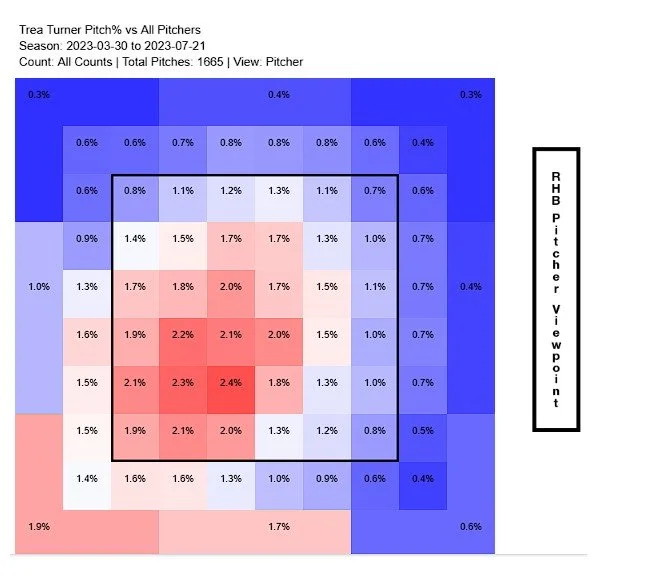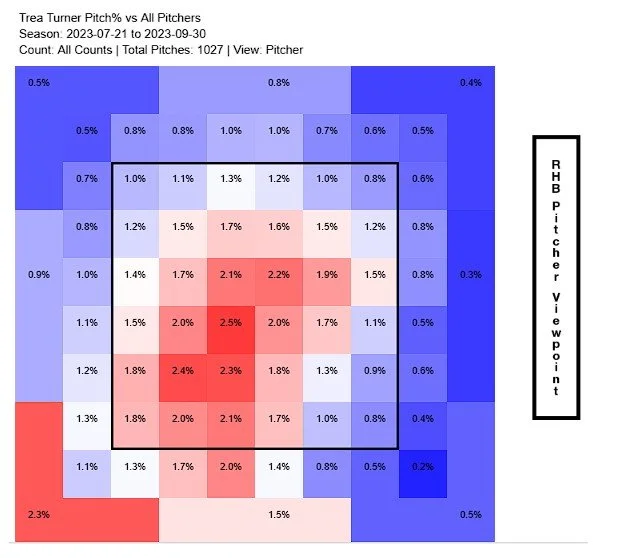GRADE THE TRADE: THE PRICE OF A BLENDER
This edition of Grade the Trade is written by esteemed guest author Richard Martindell Jr
“It is not titles that honor men, but men that honor titles.”
-Niccolo Machiavelli
Honor. It’s what makes any exchange capable of being made with trust. And trust is what two people need between them to determine the true value of things. Because one cannot go into a trade without knowing precisely what the value of something is. Whether that be a baseball player, draft round, or a Ninja Professional Plus Blender DUO with Auto-IQ.
Indeed, a person must be aware of the value of the thing they give away or else they may be giving up a value for less than its worth. This could be anything from a player for ham sandwich or a Ninja Professional Plus Blender DUO with Auto-IQ for $70 less than retail value. No one is immune to this, not a league champion and certainly not a large retail store with red as their major color.
This brings us to the most recent trade in the League of Mediocre Gentle(wo)man: 1 in a Row’s Trea Turner for Hiroshima Carpe Diem’s 7th round draft pick. With this trade, the Carpe Diems have solidified a healthy list of keepers with the following:
Trea Turner (1)
Adley Rutschman (9)
Pablo Lopez (10)
Tyler Glasnow (23)
O’neil Cruz (24)
Cole Ragans (FA)
These keepers do not come without a cost, however. This is now the second time Ian Shaw has parted with a draft pick this off season. The first being his 3rd round exchange to obtain O’neil Cruz and Tyler Glasnow. This means that between the first 10 rounds, Shaw will only have 8 picks, three of which will be used to keep Turner, Rutschman, and Lopez. This leaves only 5 picks for Shaw to maneuver and pivot. If a run on outfielders begins, how quickly can he respond?
These are hardly real concerns though. Shaw is set up with incredible value for his keepers in these earlier rounds. Yes he’s a tad top heavy, but with who he’s keeping, what’s to complain about? He can easily grab an outfielder in the 2nd, 4th, 5th, or 6th round. Hell, maybe he can grab two.
So, let’s look at the prize in question: Trea Turner. This year, he will inflate from the seventh round to the first. The question now is, “Is he worth it?” In 2023 he had one of his worst starts to the season in recent memory. From the start of the season to the time he was traded to Vinson on July 21st, he hit a putrid .241 BA to go along with his 10 HR, 55 R, 34 RBI, and 21 SB. You can view his efforts with the following heatmap during that period.
Considering that from July 21 to Sept. 30, Turner would hit .298 and 16 more HR, Shaw is clearly banking on Turner’s end of the season rather than the first. With a final stat line of 102 R, 26 HR, 76 RBI, .266 BA, and 778 OPS, is Turner back? Let’s look at his heatmap from July 21 to the end of the season.
Honestly, not much difference. Much like the boxes of Ninja Professional Blenders, it’s difficult to really tell what changed with Turner. Courtesy of Fangraphs, Trea Turner’s O-Swing% (how often a player swings outside of the strike zone) did increase to 38.3% in 2023 from 36.4% in 2022. And as he was swinging more outside of the strike zone, he was making less contact, dropping from a 60.7% in 2022 to 55.9% in 2023.
Turner’s SwStr% increased by the same amount as his O-Swing%, ~2%. This change might not be enough to explain a 50 point difference in batting average. But Turner has started to show a trend over the last three years of increasing by such a percentage each year: 8.8% in 2020, 10.2% in 2021, 12.8% in 2022, and 14.9% in 2023.
So Turner is swinging more at pitches outside of the zone and making less contact with them than he used to. And yet, he finished the season with around the same counting stats as his previous years. His batting average decline is concerning, but Trea Turner is making it work and so long as Phillies fans like Ian Shaw keep roaring for him, he will probably keep producing. He just needs to keep his wrists and shoulders relaxed in the batter’s box.
https://www.si.com/mlb/2023/10/09/trea-turner-roars-back-phillies-nlds-slump
However! This was also a player that undoubtedly would have been thrown back if the fear of missing out (FOMO) was not a factor. The cultivation of fear that begins to creep into even the most veteran of owners over missing out on a perennial first round talent, is something that Vinson Mulvey has been exquisite in reaping for his benefit. At this present time, Mulvey has two more first rounders in Freddie Freeman and Jose Ramirez he will either have to trade or throw back into the pool. A pool that will possibly include other such names as Nolan Arenado, Paul Goldschmidt, Mike Trout, and Jose Altuve. But is Turner better than all those? Surprisingly, yes. Only Freeman had a better year and Ramirez was at best, comparable. Altuve had a better second half than Turner, but only after missing the entirety of the first half. But the point remains that there are others out there and that this trade is largely predicated by fear. Ian Shaw, wanting to get ahead of potential draft order degradation thrust upon his team, made this trade before Trea Turner’s price might increase.
HIROSHIMA CARPE DIEM - Grade: B
You got good value by only having to give up a 7th round pick for Turner. But you lose points for feeling like you needed to make this trade to begin with when you could easily have had as good of a draft with whoever was left in the first and second rounds.
Now Mulvey’s side of this trade is interesting. He loses nothing by getting rid of a player he could not keep, but this is about theoretical value. Because what Mulvey got back was a 7th round pick. This is 5 rounds less than what a 120IP Glasnow and an 8 games played O’neil Cruz got back in Shaw’s previous trade. If Vinson had waited for the draft order to be released, he most likely could have gotten more for Turner.
Let’s look at what historically, a 7th round pick has netted teams in previous seasons:
So, Vinson Mulvey has traded Trea Turner for Franmil Reyes or Brandon Lowe. It’s not an even value. The chance for this pick to become a Kyle Tucker is slim. Much like the chance that the 19 year old at the customer service counter would notice the $100 Ninja Professional Blender being shown instead of the $150 one it actually was.
1 IN A ROW - Grade: C
You managed to move one of your first round talents that you weren't going to keep anyway. You've now also set the price tag for how much more Freddie Freeman should cost an owner. But what you got back is really unexciting considering the recent history of players in that round. You might have set the price too low on Turner so Freeman might be only a 5th round for an owner instead of a 3rd or 4th round. If you manage to trade Freeman and you get a very good draft round for it, then this trade will be retroactively upgraded to a B+. But like the Cincinnati Reds and their Candelario deal, you don't get points for deals you haven't made yet.
my verdict:
When word reached that Mulvey was looking to trade his first round players, a lot of the league panicked because it was assumed that the return would be an incredibly lopsided value pick. Instead we got what might be one of the most inoffensive trades in league memory. Turner has a lot of risk and will cost a first round draft pick to keep. But a 7th round is not the most atrocious price that Mulvey has gotten back. This trade is incredibly fair and could be framed and held up as a standard for folks looking to make trades that were hesitant before. It also clearly improves both teams, even if that improvement is not large.
And I hope more people get into the market and make trades this offseason. For we are all pineapples, coconut cream, and rum waiting to be blended together in a wonderful concoction.


